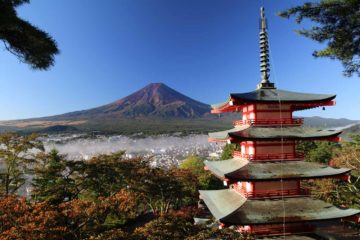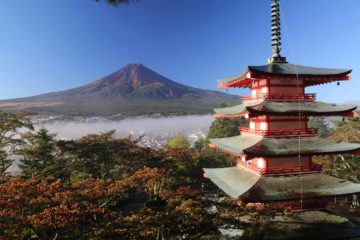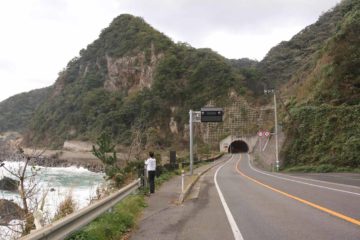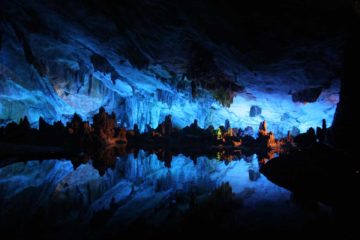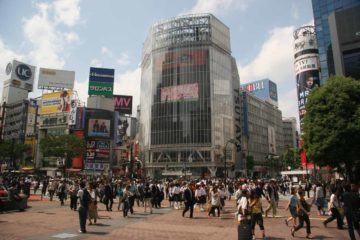About Joren Waterfall (Joren-no-taki [浄蓮の滝])
The Joren Waterfall (Joren-no-taki [浄蓮の滝]; also just called Joren Falls) was a gushing waterfall backed by some pretty pronounced basalt columns at its base. We happened to visit this waterfall on a day where it was raining pretty hard so the Kano River (狩野川) took on a more swollen, turbulent, and muddy appearance. Although the falls itself was naturesque, the developed footpath was flanked by a bit of infrastructure in the form of little cafes and farm shops both at the trailhead as well as at the bottom where the falls could be seen. Apparently, this area was known for growing fresh wasabi, which was something we really appreciated later on in our Japan trip when we mixed some of the fresh stuff into a shoyu mix as a very potent soba noodle dip. By the way, the Kano River that was responsible for this falls also happened to drain as a major river into the Surugawan (or Suruga Bay) northwest of the Izu-hanto (or Izu Peninsula) by the city of Numazu (a city where my Dad spent some time working in his younger days).
According to the signage, the Joren Waterfall was the largest waterfall on Mt Amagi (the mountain, or more accurately mountain range, responsible for the Izu Peninsula) at 25m tall with a plunge pool that was said to be a pretty deep 15m. The basalt that we noticed underneath the waterfall was said to have come from a lava flow sourced by the eruption of a “parasitic volcano” neighboring Amagi-san called Mt Hachikubo.
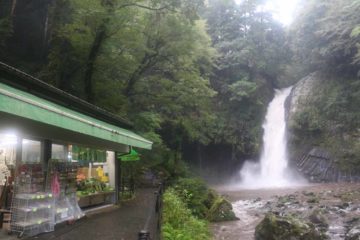
While the swollen state of the waterfall kind of instilled a sense that it was forbidden to get near it, fittingly we had read a sign talking about the Legend of the Joro-gumo or Wasp Spider. To make a long story short, a farmer took a web wound around his leg (thinking the spider who wound this had mistaken it for a tree branch) and placed it on a tree stump. But soon thereafter, the stump was dragged into the basin of the waterfall and the local farmer warned the rest of the villagers about the wasp spider.
Years later, a lumberjack from a different village was felling a tree near the falls before he dropped his hatchet into the waterfall’s plunge pool. Thinking he had lost his tool, he eventually got his hatchet back only after some beautiful woman returned it to him under the condition that not a word about her existence be uttered lest he would lose his life. Sure enough, after drinking with friends and letting out word of his experience with the beautiful woman (who happened to be a shapeshifted wasp spider), he never woke up again after passing out.
Speaking of signs, according to the signage we saw here, this waterfall was said to be one of the Top 100 Waterfalls in Japan, which was a list backed by the Japanese Ministry of the Environment in 1990. Unlike most of the signage we encountered around waterfalls like this (which were almost exclusively in Japanese), the interpretive signs here were multi-lingual including not only English but Korean, Chinese, and Portugese. This led me to believe that this waterfall wasn’t as far off the beaten path as I would have expected.
Related Top 10 Lists
No Posts Found
Trip Planning Resources
Nearby Accommodations
This content is for members only. See Membership Options.Featured Images and Nearby Attractions
This content is for members only. See Membership Options.Visitor Comments:
Got something you'd like to share or say to keep the conversation going? Feel free to leave a comment below...No users have replied to the content on this page
Visitor Reviews of this Waterfall:
If you have a waterfall story or write-up that you'd like to share, feel free to click the button below and fill out the form...No users have submitted a write-up/review of this waterfall

